How to get rid of mealybugs on an orchid?
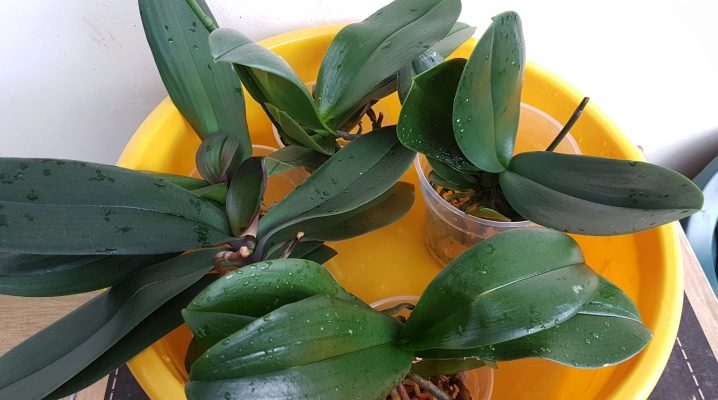
There are quite a few different diseases of orchids caused by various parasites. A mealybug can also lead to a flower disease. We will tell you more about how to get rid of this parasite.
Views
There are a lot of mealybugs. Each biological species has some peculiarities.
Seaside mealybug
One of the representatives of these parasites. It is quite widespread. Females of this type of worm have an elongated body. The color of their cover is pinkish with a gray tint.... On closer inspection, a light bloom can be found on the body of an insect, which in appearance resembles flour.
The bodies of these parasites are covered with special bristles. They are usually small in size. In the region of the back, there are grooves that are located in the transverse direction. Biologists note that males and females of these insects have a number of characteristics. Interestingly, adult males do not have a mouth opening, which means they cannot consume nutrients. After breeding, they die. Moreover, they have wings, which provides them with good mobility.
An important distinguishing feature of female mealybugs is that they do not have wings.... Usually these female insects live in colonies on plants. These parasites reproduce with eggs. Before laying them off, females form special elements on the biological substrate that resemble cotton wool in appearance. It is these elements that look like a white bloom on orchids, according to which many people begin to think that the plant is affected by some kind of parasite.
Biologists note that these parasites are quite active. Worms not only move well through the flowers and leaves of the orchid, but can easily reach the substrate.
If there are several flower pots with plants on the windowsill or some other place at once, then these parasites can be on several flowers at once.
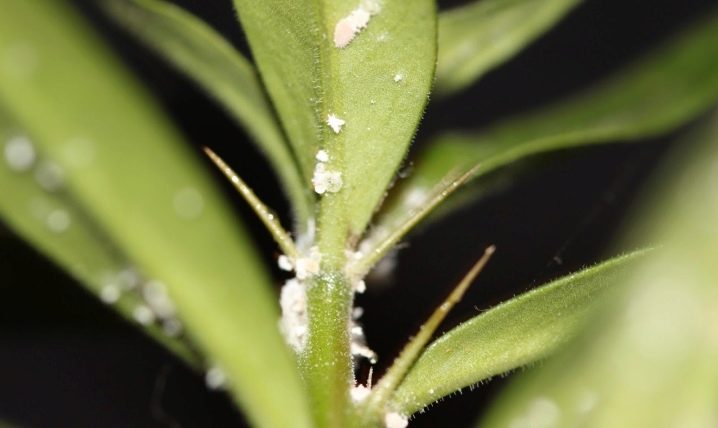
Females of mealybugs are quite fertile. Under favorable conditions, these insects can easily lay eggs 2-4 times in just one season. The next stage of development after the egg is the larva. An attentive observer can notice the larvae of a mealybug on an orchid. They resemble white fluff in appearance.... In order for the larva to grow actively, it needs nutritional components. To do this, she attaches herself to the orchid and begins to consume its juices.
One of the most "favorite" habitats of the mealybug is the area of the leaf sinuses.... The humidity and temperature in this zone of the flower are quite well suited for the development and life of this parasite. Another biological species of these parasites is citrus mealybug. An important feature of this insect is that there is a specific coating of natural wax on its cover. If we consider the parasite in more detail, then on its lateral surfaces of the body you can find rather thick bristles. The color of this insect is yellowish or brown..
Bristly mealybug
Another biological species of these parasites. The females of this insect secrete quite a lot of specific secretions, which have a sticky consistency. This substance contributes to the fact that fungus can appear on the orchid.The females of this parasite bring more harm to the flower.
They have a pinkish or orange body. Moreover, females are somewhat larger than males.
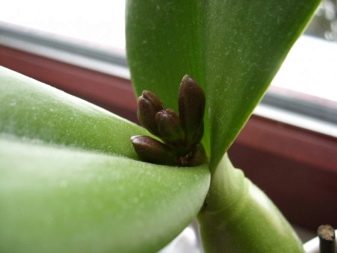

Causes and signs of appearance
There are several causal factors that can lead to damage to orchids by mealybugs. Experts note that this disease more often occurs during the seasons.when the level of insolation decreases. Less exposure of the plant to sunlight contributes to the fact that natural metabolic processes in it slow down somewhat, which means that the risk of various parasitic diseases increases. Weakened flowers are also in the "risk group"... If the plant was initially healthy and growing well, then the risk of infection with a mealybug and further damage to it is reduced.
The reasons that may contribute to the appearance of this parasite on orchids also include:
- unjustified use of fertilizers for the substrate containing nitrogen;
- decrease in ambient air humidity;
- belated cleaning of the plant from leaves that have already died out;
- incorrectly selected temperature regime;
- too frequent or incorrect watering.
Mealybugs can be found on a wide variety of parts of the plant. Orchid lovers should not forget about this. Some people think that this parasite mainly affects the leaf sinuses of the flower. However, it is not. Adults can also be found on flowers. The females can lay eggs on the substrate. The grown larvae are mobile and can easily reach the leaves for feeding.
The danger from mealybugs also lies in the fact that against the background of their vital activity, the risk of secondary plant diseases increases significantly.
At the same time, in the course of its life, the parasite (usually its larvae) "inject" part of its secretions into the plant, which leads to the fact that the growth of the flower is significantly disturbed. At the same time, the course of metabolic reactions in the leaves and even in the root system of the plant deteriorates.
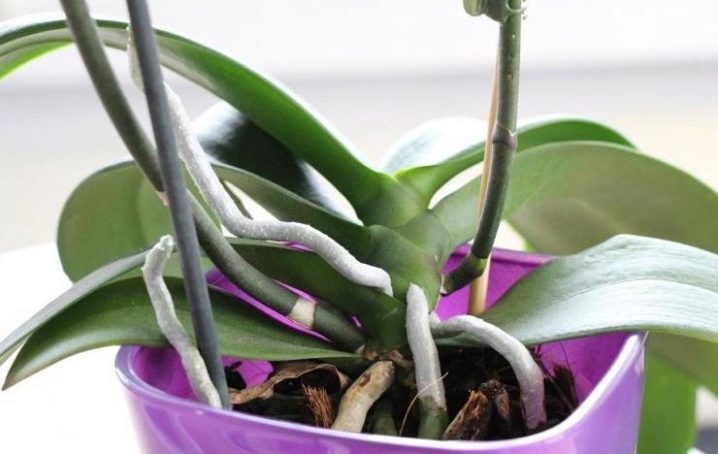
Control methods
In order to get rid of mealybugs, you need to be patient enough. It is quite difficult to deal with these pests. Orchids infected with these parasites can be treated at home. The time of treatment for damaged flowers depends largely on their initial state, as well as on the degree of damage.
The first step in any method of treating "diseased" orchids is a thorough examination of the plant. If, upon examination, signs of parasites are found on the flowers, then they should be cut off. The same should be done if peduncles are affected.... All existing plaque on the plant must be removed. After such a thorough mechanical treatment, you can already treat the damaged flower with special remedies.
A flower damaged by mealybugs should be treated carefully.
Some people do not cut off the affected leaves. However, if these parts of the plant are significantly affected, then in this case it is better to remove them. This will help keep the plant alive.
Subsequently, as soon as the orchid can be cured, it will have new healthy leaves, and then flowers.
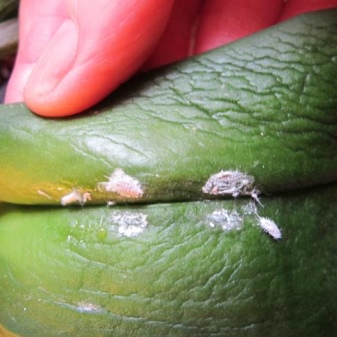
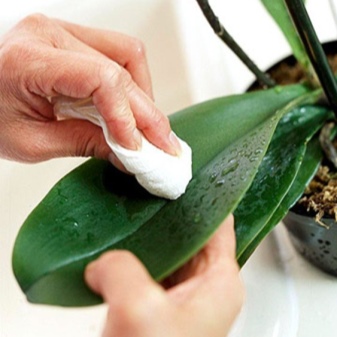
Chemicals
Modern chemicals are quite effective means of controlling mealybugs. It is recommended to use these drugs even for the treatment of flowers severely damaged by these parasites. Experts note that chemical agents are quite effective in helping to remove young individuals of worms. Moreover, these preparations also contain components that have a negative effect on adults.
When using chemicals, be sure to keep in mind that several courses of application may be required. This should be done because mealybugs have several stages of development.
Thus, after a single application of the chemical, not all larvae or eggs may die.In such a case, reprocessing of the affected plant will contribute to permanent damage to all remaining insects. Experts note that in some cases even 3-5 applications of chemicals are required.... In this case, the affected orchid should be treated with a solution after 12-14 days.
One of the chemicals that can be used for the treatment of flowers infected with mealybugs, is "Fitoverm"... The undoubted advantage of such a drug is that it is safe for humans. In this case, the components contained in it penetrate deep into the flower after processing, and subsequently into the body of the larvae. In this case, some of the insects already die 2-2.5 hours after the plant is treated with this drug. For the treatment of orchids infected with the worm, the Fitoverma solution is used. For this, it is recommended to dilute 2 ml of the drug in 0.2 l of water.
In order to cure an orchid from mealybugs, you can use other means. One of them is "Aktara"... This substance enters the interior of the orchid, and then spreads through its internal system. Gradually, this drug also enters the peduncle. The duration of action of this product after spraying the leaves is approximately 2-3 weeks. In the substrate, this drug lasts longer - 1.5-2 months.
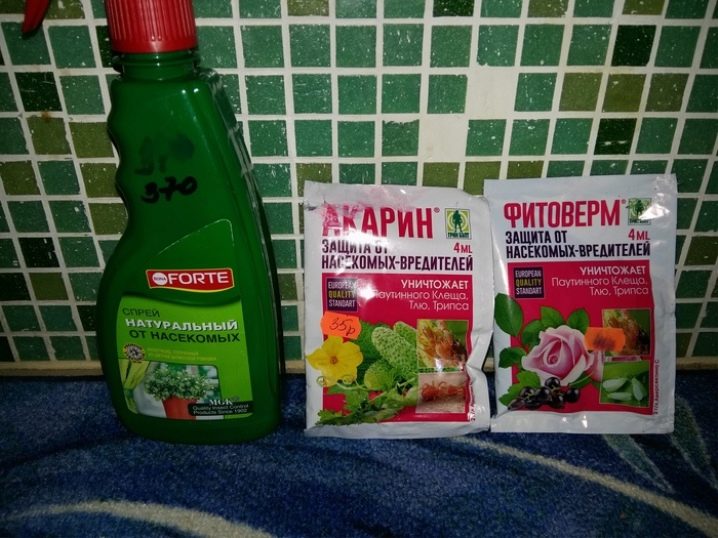
Traditional methods
Mealybugs that appear on orchids can be destroyed not only with the help of chemicals. Experts recommend choosing such methods of treating flowers in cases where they are significantly damaged, since they have a rather aggressive composition. Most of the folk remedies are effective, but "softer".
To prepare a remedy for ridding a flower of worms, you should take:
- alcohol - 1 tbsp. l .;
- a liter of warm water;
- laundry soap - 20 g.
To make a medicinal product, you first need to grind the soap. Further, all components must be thoroughly mixed together. When processing, you should pay special attention to areas where there is a lot of white bloom. Another effective remedy for getting rid of infected plants from mealybug is horsetail infusion. It can be purchased at the pharmacy.
Before spraying the affected orchid, the infusion should be diluted with water in a 1: 1 ratio. They should not only process the leaves and flowers affected by the worm, but also the roots.
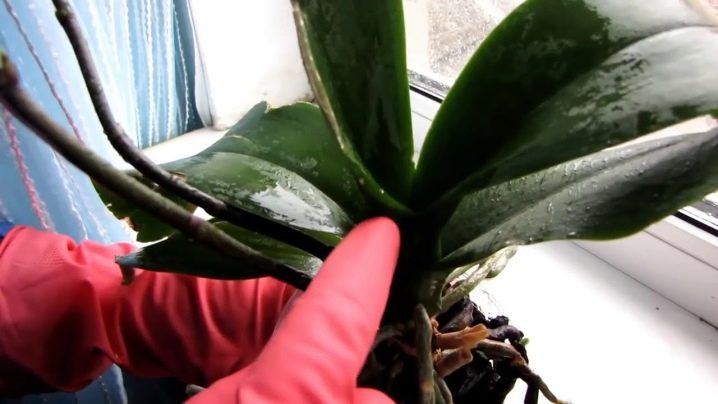
Prevention measures
Preventive measures against mealybug infestation will help reduce the possible risk of disease. An important condition is the acquisition of an initially healthy flower. To do this, you should carefully examine the plant before purchasing. If it has a "powdery" bloom, then buying such an orchid is not worth it.
In order to reduce the risk of infestation of orchids with worms, the following recommendations should be carefully followed.
- Monitor the humidity in the roomwhere the flower is. If the room is too dry, then you need to move the plant to another room with more humid air. In this case, you can additionally wipe the leaves with water.
- Maintain optimal lighting... So, with insufficient insolation, it is recommended to think about placing a special lamp next to the orchid.
- Regularly assess the condition of the flower... The orchid should be inspected regularly. When a white bloom appears on the leaves or flowers of a plant, it is imperative to exclude the possibility of infection of this plant with a mealybug. This will help save the orchid from possible death.
































The comment was sent successfully.